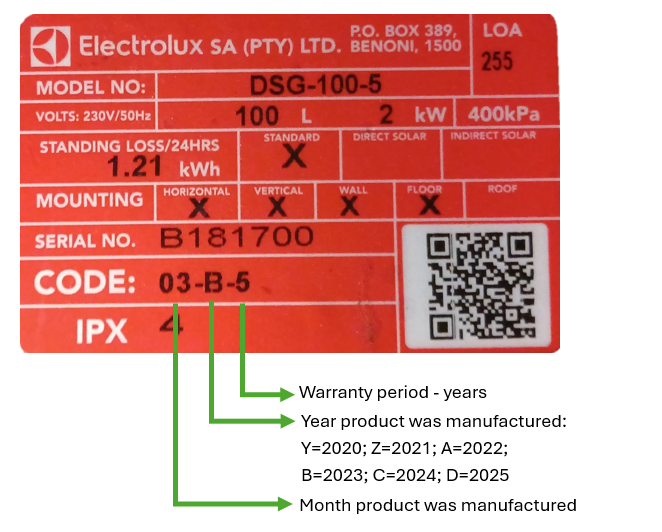Understanding Your Geyser Warranty
Gone are the days when a geyser would last 20 years. With the rising cost of copper, manufacturers have turned to more affordable materials to ensure geysers remain accessible to the average household. While copper tanks are still available, they now cost approximately three times more than standard options. Today, most geysers are made from durable steel or aluminium.
Although sacrificial anodes are designed to protect these tanks from water minerals, rust inevitably sets in over time, and the geyser may eventually burst.
(Read our article on anodes to better understand their function.)
Leading Brands and Warranty Coverage
In South Africa, the two leading brands manufacturing standard household geysers are Kwikot and Ariston. Both offer a 5-year warranty on their 100L, 150L, and 200L electric water heaters.
Is My Geyser Still Under Warranty?
The 5-year warranty is calculated from the date of installation. If you do not have proof of installation—such as a COC (Certificate of Compliance) or an invoice showing the installation date—the manufacturer will rely on the manufacturing code printed on the geyser’s serial tag.
Do not tamper with this sticker, as it serves as proof that the reported geyser is still under warranty. Simply take a clear photo of the sticker and contact the manufacturer or your plumber to confirm whether your geyser is still covered.
How to Protect Your Warranty
To ensure your geyser installation meets the manufacturer’s terms and conditions—and to avoid your warranty being voided—follow these essential guidelines:
• Use a Qualified Plumber:
Always hire a licensed plumber who can issue a COC. This proves the installation was done according to SANS standards. You can verify licensed plumbers through the City of Cape Town’s plumber register (or follow up with your local municipality). Make sure your invoice and/or COC includes the geyser’s serial number and date/manufacture code.
• Choose a Reputable Company:
Work with an experienced, well-established plumbing company. If your geyser fails during the warranty period and the manufacturer refuses to honour the warranty due to poor installation, you’ll need a reputable installer who can take responsibility.
• Check Your Pressure Relief Valve (PRV):
Ensure the PRV’s pressure rating does not exceed that of your geyser. This is a common mistake by unqualified installers aiming to increase water pressure—unaware that this can seriously damage the geyser over time.
• No One-Way Valves Between PRV and Tank:
It is critical that no one-way valves, including stop cocks, are installed between the PRV and the geyser tank. This can cause dangerous pressure buildup, leading to tank rupture. Installing these is against plumbing standards and will void your warranty.
• Correct Installation Orientation:
The geyser must be installed upright, with the cold water inlet at the bottom and the hot water outlet at the top. Since hot water rises, incorrect installation will reduce both efficiency and performance.
• Protect Your Heating Element:
Never switch on your geyser if it’s empty. In the event of a water outage, turn off your geyser and only switch it back on once water supply is restored to prevent damage to the heating element.
What to Do If Something Goes Wrong
If you suspect there is a fault with your geyser, contact the manufacturer immediately. They will send out a technician to assess the problem.
⚠️ Do not allow your own plumber to remove or replace the geyser before the manufacturer has had a chance to inspect it. This may void your warranty.
If the geyser has already been removed, it will need to be reinstalled before the manufacturer’s technician can determine whether the issue is repairable or if the entire tank needs replacement.
Decoding your Warranty sticker:
Ariston:

Kwikot:

